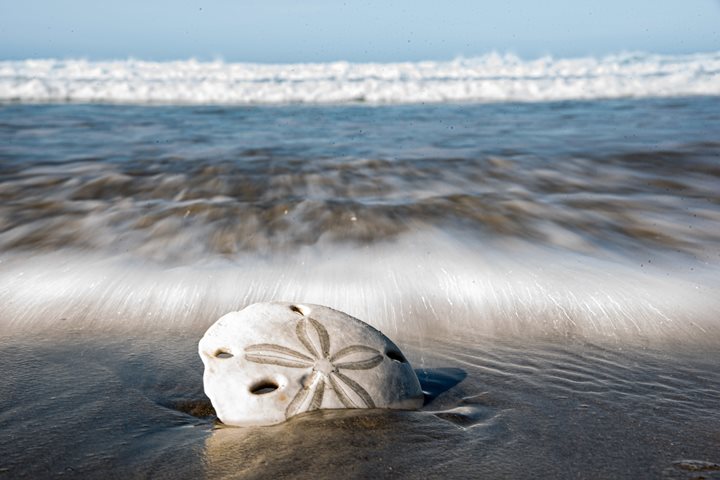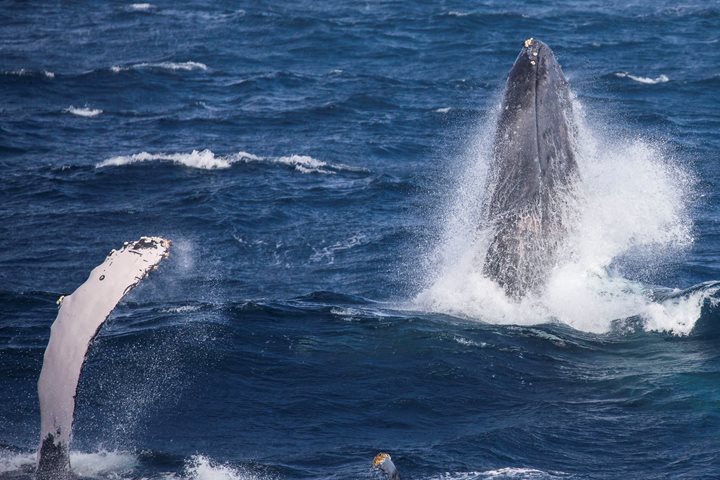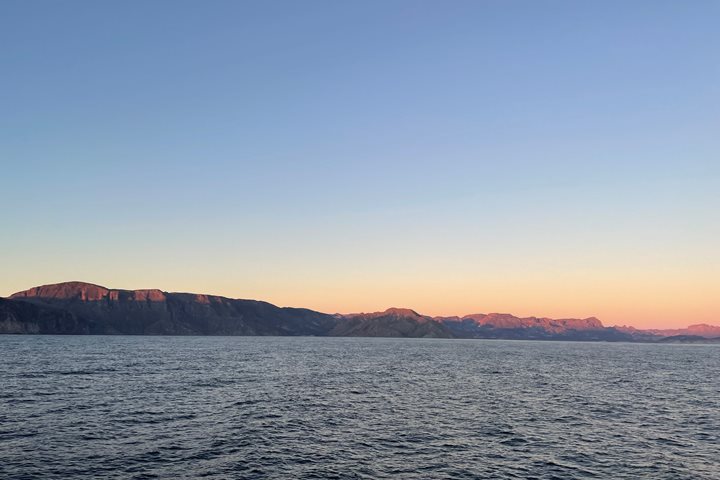Our day on National Geographic Sea Bird started with a green flash, though fewer eyes are focused for the sunrise green flash that occurs just as frequently as the flash at sunset. For those on board who were doubters, guest Bob Hulse, got the perfect photographic proof of its existence.
Rounding the north end of Isla San Marcos, sharp eyes on the bow detected several groups of cetaceans ahead. Some proved to be bottlenose dolphins. But interspersed amongst the dolphins were several different focal pods of short finned pilot whales.
One of the benefits of an expedition is the ability to adjust to the unplanned, remarkable moments that reveal themselves each day. Quickly plans to kayak and hike were replaced with a morning spent in the presence of these black fish.
As pilot whale sightings go, this was perhaps one of the largest aggregations of animals. Everything from mothers’ with calves, juveniles, and robust bulls with distinct dorsal fins made up these loosely affiliated pods, totaling more than 100 individuals. Successful squid fishing tonight just off shore of Santa Rosalia explains the presence of these unique tooth whales.
In 1883 Mexico passed a Law of Colonization as a means of raising foreign capital. Under this law a French syndicate was issued a 99-year lease on July 17, 1885, for the mining of large copper deposits found at Santa Rosalia. The French ran this mine and smelter until 1954 when the Mexican government took over and continued operation until 1985. This afternoon we got a guided tour of the inner workings of the mine from a man who worked in the smelter until it closed in 1985.
The town has French influences to this day. Houses are constructed primarily out of imported wood, rather than the more common masonry, often with high rooflines and broad verandas. Historical buildings from the late 1800s still abound, but perhaps the crowning French achievement is the metal church designed by Gustave Eiffel, builder of the famous Eiffel Tower in Paris. The church was prefabricated in France and sent by ship to this tiny town in the Baja Peninsula, where it remains to this day!










